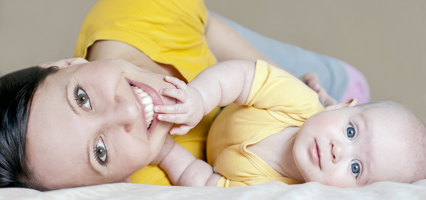
Postnatal Care (After the Birth)
1 South Maternity Ward
The maternity ward (1 South) offers care for antenatal and postnatal inpatient women. The dedicated and experienced team on in the maternity ward is culturally diverse and provide high quality woman-centred care. We offer an array of services from our midwifery and medical teams, as well as social work, perinatal mental health, physiotherapists, breastfeeding and lactation support.
The midwives in the maternity ward endeavour to create a positive environment for you through education and support, encouraging your confidence, and ensuring your baby has the best start in life.
St George Hospital is a Baby Friendly Health Initiative (BFHI) accredited Hospital. This means we follow the WHO/UNICEF: Ten Steps to Successful Breastfeeding. While you are an inpatient in the maternity ward, your baby will stay with you at your bedside day and night (unless they need to be admitted to our Special Care Nursery. This practice will help you to bond with your baby, learn to care for them and breastfeed.
While you are an inpatient in the maternity ward the midwives will check on your and your baby’s health and support you to learn to care for and feed your baby. You and your support person are encouraged to attend our ‘early days with your baby’ classes which are held at 10.30 most mornings which cover breastfeeding, settling, bathing and where to get further support after you go home. We suggest you come on the day after your baby’s birth. There is no need to book-in, just come along to the Parenting Room in the maternity ward.
The average length of stay after your baby is born is around 48 hours. After you are discharged home, we may be able to offer you follow up by our Midwifery Support Program (MSP, see below). If you have any questions or concerns about yourself or your baby in the first two weeks after the birth, we encourage you to call your midwife, the MSP team, or the midwives in the maternity ward for guidance.
The maternity ward visiting hours are 9am to 9pm for your support person and 3pm to 8pm for other visitors.
Telephone 9113 3145 for enquiries and appointments.
Introduction Video:
New Dad's Video
-33.967583753993, 151.13291323185
- Breastfeeding Information
- Having a Baby in NSW
- NSW Hearing Screening Program. A free hearing screen is offered to all babies born in NSW. The ‘SWISH’ program helps identify babies who may have hearing loss. This hearing screen is done when baby is asleep and settled. The hearing screener will explain the test and ask for your consent before your baby is screened. Please click here for more information.

- NSW Newborn Bloodspot Screening Tests. Newborn bloodspot screening tests are offered to all babies born in NSW. A blood sample is collected from your baby’s heel onto a pre-printed paper card. Collection occurs in our maternity ward or at home by one of our midwives. Please click here for more information (in English and in different languages):
- Raising Children (the Australian Government Parenting Website)
- Safe Sleeping and Sudden Infant Death in Syndrome (SIDS):
- Sydney Children’s Hospital Factsheets
- Vaccinations and Injections for your baby - With your consent, at birth, your baby will receive their Hepatitis B vaccination and Vitamin K injections.
Early Days Session - Maternity Ward video
'Early Days Session - Maternity Ward’ video
Bathing your Baby video
'Newborn Bathing’ video
Safe Positions for your Baby
‘Safe Positions for your Baby’ video
Early Days of Parenting
‘Early Days of Parenting’ video
Postnatal Physiotherapy
‘Postnatal Physiotherapy’ video
‘Postnatal Physiotherapy - NSLHD’ video
Used with permission from NSLHD
Post-Birth Exercises After you go Home
‘Post-Birth Exercises After you go home’ video
The Midwifery Support Program (MSP) continues to care for mothers and their babies at home following a Hospital stay of up to two days following a vaginal birth or up to three days following a caesarean. This service is available to women within the St George Hospital local area. On occasion you may be invited to attend the maternity ward for your care instead of being visited at home. If you live outside the local area, you may be referred to your local Hospital’s program depending on availability.
At St George Hospital, we encourage women who are eligible, to go home on MSP. MSP allows you to be comfortable in your own home environment while still receiving the midwifery care that you and your baby need. During the visits, the midwife will check your health and your baby’s health, and provide support and advice about postnatal care, feeding and caring for your baby.
Whilst you are on the program we offer a combination of home visits, phone calls and no contact days. Your midwife will normally visit between the hours of 9am and 4pm (no appointment times are given). You will be on the program until your baby is five to seven days old depending on your individual needs.
If you have any questions or concerns about yourself or your baby in the first two weeks after the birth, we encourage you to call your midwife, the MSP team, or the midwives in the maternity ward for guidance. After this you will link in with Child and Family Health services who will provide care and advice until your child is five years old.
Midwifery Support Program - Brochure
Enquiries: 9113 3148
Advice and support (Maternity Ward, 24 hours): 9113 3187
Support After you go Home
‘Support After you go Home’ video
- Australian Breastfeeding Association.
- Beat the Heat - Heat and health for babies and young children
- Breastfeeding Lactation Information and Support Service (BLISS).
- Child and Family Health. (South East Sydney).
- COPE (Centre of Perinatal Excellence) (Mental Health Support).
- Feeding your Baby
- Having a Baby in NSW.
- NSW Health
- PANDA (Mental Health Support).
- Raising Children (the Australian Government Parenting Website).
- Sydney Children’s Hospital Factsheets.
- Healthy eating after your baby is born video
- Your Monthly Breast Check video
Special Care Nursery
The Special Care Nursery (SCN) is a specialised unit within St George Hospital that provides care for babies who may require additional support and monitoring. These babies may be born prematurely, with low birth weight, or have medical complications that require specialised care.
In the SCN, your baby will be cared for by a team of skilled healthcare professionals, including paediatric doctors, neonatal nurses, lactation consultants and allied health professionals such as speech pathologists and dietitians. Our team will work together to provide comprehensive care to your baby.
Whilst your baby is in SCN, we may need to use specialised equipment such as an isolette, respiratory supports and monitors to observe your baby’s breathing, heart rate, and other vital signs. Your baby may also receive feeding support, such as tube feeding or IV nutrition, to help them grow and develop.
While it can be difficult to have your baby in a SCN, rest assured that your baby is receiving the best possible care from a dedicated team of healthcare professionals. Your healthcare team will keep you informed about your baby's progress, and work with you to create a personalised care plan that meets your baby's unique needs.
- Parents are welcome in the SCN at any time and we encourage frequent visiting
- Visitors are welcome between 3pm-8pm.
- A maximum of three people can be at the bedside at any time during visiting hours. One of these must be a parent.
- Siblings are welcome in the SCN with a parent at any time. Siblings are to be supervised at all times. No other children are permitted in the SCN.
-33.967583753993, 151.13291323185
• Parents are welcome in the SCN at any time and we encourage frequent visiting
• Visitors are welcome between 3pm-8pm.
• A maximum of three people can be at the bedside at any time during visiting hours. One of these must be a parent.
Siblings are welcome in the SCN with a parent at any time. Siblings are to be supervised at all times. No other children are permitted in the SCN.
The following are helpful resources that may offer further support:
Labour and Birth
Birth Unit
Welcome to our state-of-the-art birth unit. Our beautifully designed facility boasts eight spacious and comfortable birth rooms, each thoughtfully designed to provide a calming and peaceful environment for expectant families.
Each room comes equipped with a relaxing bath for labouring mothers. To ensure the safety and comfort of both mother and baby. We also offer wireless fetal monitoring technology, allowing for freedom of movement during labour without the constraints of traditional monitoring equipment.
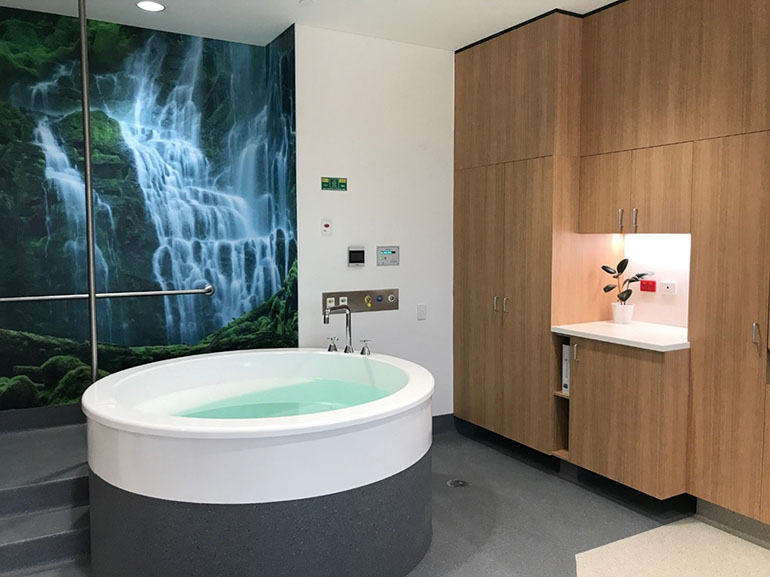
Our collaborative staff of highly trained and compassionate healthcare professionals are committed to providing exceptional care throughout your birthing experience. We believe that every birth is unique and should be approached with individualised attention and care. We strive to provide a safe and supportive space for families to welcome their newest addition to the world.
You can contact the Birth Unit 24 hours a day on 9113 2125 to speak with a midwife.
The Birth Unit is located on Level 2 of the Tower Ward block.
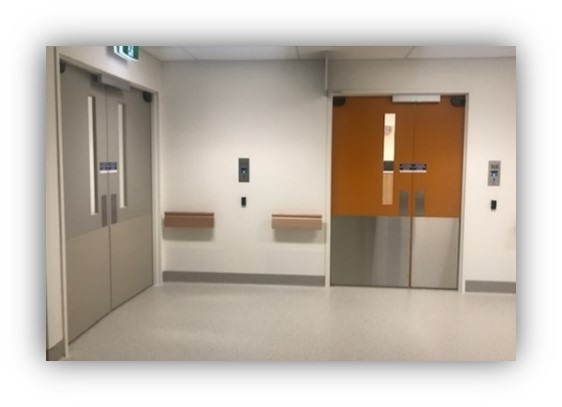
Open 24 hours a day.
-33.967583753993, 151.13291323185
Who can come with me and support me during labour and birth?
You may bring two birth partners with you to Hospital. This could be your partner, mother, sister, doula, or other support person. If you are not in labour and need to stay overnight, we may ask your support person to go home overnight so everyone can get some rest, then they can return in the morning. If you go into labour overnight, we will call your support person to come back into the birth unit.
Supporting a woman in labour
Having a support person in labour and birth can help your experience. For more information about birth support partners, follow this link.
What do I bring?
Refer to the NSW Health ‘Having a Baby Book’ for information on what to bring.
- Your baby continues to grow and develop until 39 to 42 weeks. We know that every week your baby continues to grow inside you makes a difference to their short-term and long-term health and developmental outcomes.
- For pregnancies without complications, being born as close as possible to your due date or after your due date, and waiting for labour to start on its own, is usually best for you and your baby.
- In some cases and for varies reasons, it may be safer to have a planned birth before your due date. A planned birth is when a woman gives birth to her baby at a specific time, by an induction of labour or caesarean section. Sometimes babies need to be born before their due date to help reduce the chance of complications, especially if you or your baby are unwell. Planning your baby’s birth will be done in consultation with the obstetric doctors, midwives and yourself.
- For more information about timing of birth, refer here
Birth Preferences
- An important part of preparing for your baby’s arrival is to explore the options available to you to assist you in birthing and caring for your baby in the early days.
- It is important to remember that every pregnancy, every woman and every family is an individual experience. Some preferences of others may not be the same preferences that you have.
- Exploring your options during your pregnancy will help you to make informed decisions about your options. Pre-birth planning allows you to have time to understand these options and ask your Midwife or Doctor questions about your options.
- Attending a preparation for birth and parenting class is recommended to help you in the decision-making process.
- It important to make your birth preferences known to your care provider and discuss the options with them so they can help you with your decision-making. The best way to do this is to document your birth preferences in writing and bring them to your appointment to discuss them with your care provider.
- This document should be an outline of the decisions you have made but should not be a rigid set of rules for your labour and birth. It is important to know that labour and birth can be unpredictable and so flexibility and knowledge of interventions that may become necessary for the health and safety of you and your baby is important. Interventions such as assisted births or emergency caesareans are unplanned, but you may still have some preferences around these recommendations, and it is important to discuss these with your care provider. This document should be a guideline of your preferences not a strict birth plan.
- Your birth preferences can include options such as methods of remaining active in birth, who your support people will be, how your support people will assist you, preferences for pain relief options and what your preferences for your baby’s care are.
- It is important to discuss your preferences with your support people so that they will be aware of what your birth preferences are too.
Induction of labour
- If an induction of labour is recommended for you, your doctor and/or midwife will discuss the details with you. Discussing an induction of labour is important so you are well informed of the process, you can ask questions, and you can make an informed decision. Before beginning the induction, you will be asked to sign a consent form.
- Induction of labour can be done in different ways and will depend on your situation. To help decide which method is suitable for you, an internal examination will normally be recommended to check how ready your cervix (neck of the uterus) is for labour and birth. The induction may involve the use of a catheter (tube) inserted into your cervix, gel which is inserted into your vagina (prostin), breaking the waters in front of the baby, or medicine (oxytocin) given through a drip. Your induction may involve one or more of these steps to help prepare your body and bring on labour.
Caesarean Section
- If a planned caesarean is required, a doctor will discuss this with you in the antenatal period and provide you with information about the procedure.
- In some cases, women require an emergency caesarean section. Staff will discuss this with you at the time if this is recommended.
* Please note sometimes when a birth is planned, it may need to be rescheduled. Please be aware that if this happens it will be in consultation with maternity unit managers and consultant obstetricians, for reasons relating to activity, acuity, and service capabilities at that time. If this happens, new times will be discussed with you by managers as close as possible to the cancelled date.
- Every labour and birth is different and varies on when it starts and how long it takes. Your midwife or doctor can answer any questions you might have about your labour and birth, and what you and your partner can do to prepare.
- Most women experience one or more of these signs when labour is beginning:
- Regular contractions/period-like cramps.
- A ‘show’.
- Waters breaking.
- Please call the birth unit if you think you are going into labour on (02) 9113 2125
- Labour takes time. The time taken for each stage will vary from woman to woman. Everyone is different.
- Stage 1 - when your cervix is opening.
- Stage 2 – when the baby is being born.
- Stage 3 - when the placenta is delivered.
- Refer to the NSW Health ‘Having a Baby Book’ for more information .
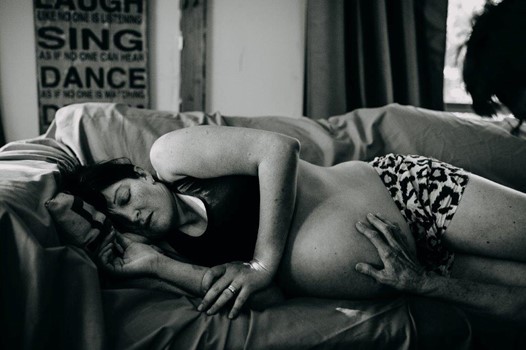
- In an active birth you have the freedom to move around the room, be upright, and change positions that feel comfortable to you during labour. Being active may help you manage contractions and progress in labour.
- Active birth is giving birth naturally in a position of your choice.
- Active birth is backed by research and evidence and is known to have important benefits for women and babies in labour and birth. These include:
- Reduces the risk of medical interventions including inductions, epidurals, and caesarean sections.
- Squatting, or hands and knee positions, help to open the pelvis, allowing more room for baby to travel through.
- Shorter labour time.
- Labour is less painful as contractions are more manageable when moving around and upright.
- Women feel more in control of their birth process.
- Better oxygen flow to baby as being in upright positions for birth allows for a better flow of blood to the baby.
- Make the most of gravity. Pushing in an upright position allows gravity to do its job and help baby travel through the birth canal.
- Your partner may feel more involved and can actively participate in supporting you. It also creates a rewarding bonding experience for all.
- Has the potential to result in less trauma to baby. An active birth can result in fewer interventions and a shorter labour, which may reduce the likelihood of stress to the baby.
- All midwives at our Hospital are trained in active birth and how to assist active labour and birth. Equipment to support you in active birthing is available including:
- Birthing balls (including peanut balls)
- Birth mats
- Bean bags
- Double-headed shower
- Large baths
- You are also welcome to bring your own items to support you in active birthing.
Pain relief options during labour and birth
- Experiencing pain in labour and birth is normal and is felt in different ways by everyone. Understanding the choices of pain relief is an important part of getting ready for the birth of your baby.
- Having a baby is a natural process, but every woman is different, and every birth experience is unique, so pain relief options vary.
- There are different ways to manage pain during labour. Available pain relief options include:
- Non-medical forms of pain relief:
- Active birthing - being active and mobile during labour, and using birth props (birthing balls, birth mats, beanbags). Please see more information about Active Birth benefits in the Active Birth section above.
- Transcutaneous electrical nerve stimulation (TENS) - you will need to provide your own machine.
- Heat packs - provided by the Hospital.
- Double headed showers in each birth room.
- Bathtubs for water immersion and birth are available in each birth room for suitable women
- Medical forms of pain relief include:
- Sterile water injections.
- Nitrous Oxide (laughing gas).
- Morphine injection (medicine).
- Epidural (patient controlled).
- Non-medical forms of pain relief:
- Please click here for more in depth information on pain relief in the "Having a Baby" book.
- Talk with your midwife or doctor about the pain relief options available to you
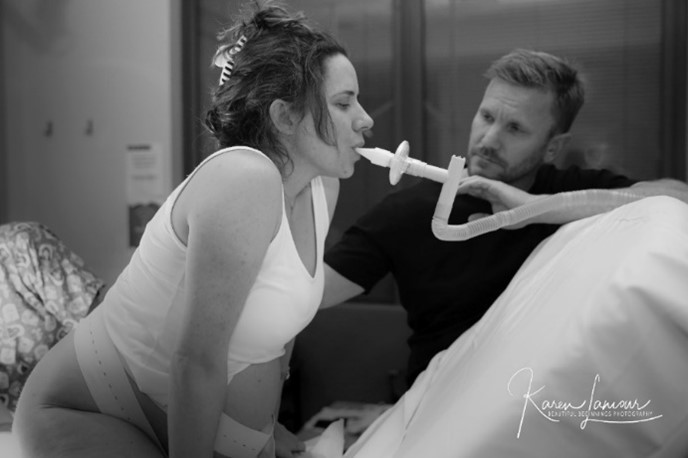
Tearing during birth, what is the perineum and how to protect it
Many women worry about having tearing during birth. The perineum is the small area of tissue between the opening of your vagina and the opening of your back passage (anus). Speak to your midwife or doctor about the risk of tearing.
Skin to skin after birth
Skin to skin is when your baby's bare body is placed on your bare chest, with no clothing or wraps between. We support you to have skin to skin with you baby immediately after birth or as soon as possible.
With your consent, at birth, your baby will receive their Hepatitis B vaccination and Vitamin K injections.
Hepatitis B
Click here for more information about Hepatitis B vaccine
Vitamin K
Click here for more information about the Vitamin K injection
Speak to the midwife looking after you if you plan to go home from the birth unit. There are some important checks you and your baby need following the birth. These checks will be done as soon as possible but will require you to stay at least 4 hours following the birth.
Infection Prevention and Control
Effective infection prevention and control practices reduce the risk of transmission of infections between patients, healthcare workers and others in the healthcare environment.
Infections associated with the provision of health care affect patients, consumers, and the health workforce and:
- Can cause considerable harm and may increase the risk of morbidity, and death
- Increase the use of health services – for example, extended length of stay, resulting in increased use of health resources such as inpatient beds, treatment options and investigations
- Place greater demands on the health workforce.
Infection prevention and control within healthcare settings aims to minimise the risk of transmission of infections and the development of antimicrobial resistance. An effective risk management system for infection prevention and control involves the identification of hazards, and assessment and control of risks for patients, visitors, and the health workforce, so far as is reasonably practicable. This approach requires consultation, cooperation and coordination between the health service organisation, patients, consumers and members of the workforce.
Barker Street
Randwick NSW 2032
Contact:
Jannelle Carlile, CNC
-33.91895959863, 151.23940849677
Malabar Midwives Midwifery Group Practice (MGP)
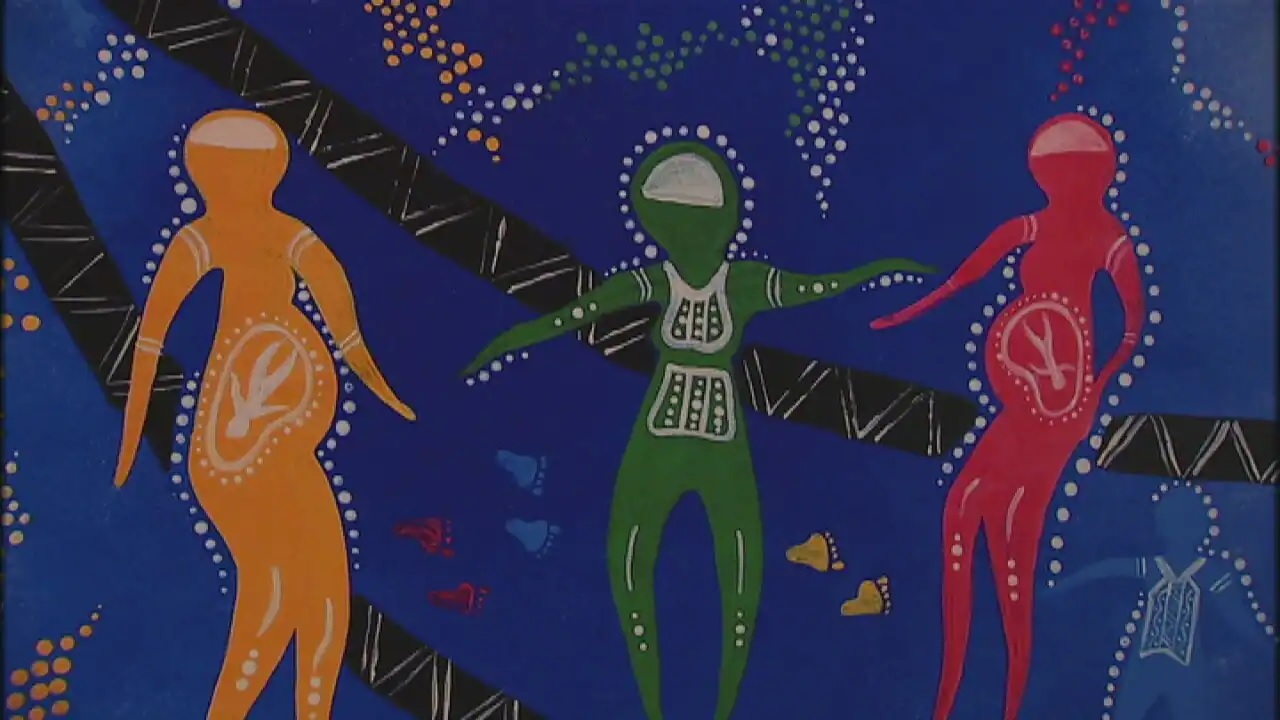
The Malabar Midwives was established in 2006 after community consultation identified the need to improve pregnancy and birth outcomes, and services for Aboriginal and Torres Strait Islander families planning to give birth at the Royal Hospital for Women. The service is committed to improve the health of mothers and babies by providing seamless, accessible, and culturally safe care.
The team includes:
- A Consultant Midwife
- Four Clinical Midwife Specialists
- An Aboriginal Health Education Officer
- A Social Worker
- And, in partnership with the Sydney Children’s Hospital
- A Child and Family Health Nurse
- Community based Paediatrician and
- Speech Pathologist
The midwives work alongside the Aboriginal Health Education Officer in a continuity of care model in which women get to know the midwives during pregnancy. Research has demonstrated that building a trusting relationship with a midwife can result in a more positive birth experience for women.
Pregnancy visits can take place at the Malabar Clinic, at the hospital, at the La Perouse Aboriginal Community Health Centre or any other convenient location for the woman. The midwives are then on-call for labour and birth at the hospital and, after the birth, will visit the family at home.
The Child and Family Health Nurse aims to meet women during the pregnancy to make a connection prior to providing ongoing support for you and your baby. The Child and Family Health Nurse conducts clinics at Malabar and La Perouse and offers some home visiting. The partnership with Sydney Children’s Hospital also provides clinics with a community Paediatrician and Speech Pathologist conveniently located at La Perouse.
The Malabar Midwives also provide care for non- Aboriginal women from the 2035 and 2036 postcodes.
Clinical Midwifery Consultant
Shea Caplice
Midwifery Unit Manager
Olivia Becker
Aboriginal Health Education Officer:
0410 344 766
How to find us
Malabar Midwives MGP, Level 0, Royal Hospital for Women (Building 17 on our campus map)
-33.919034795558, 151.23821135768
Cross Cultural Worker in Maternity plus Child & Family Health Services
.jpg)
The Cross Cultural Worker in Maternity & Child & Family Health Services provides a FREE and CONFIDENTIAL service for women and families from migrant and refugee backgrounds, and International students who are birthing and/or using child and family health services in Royal Hospital for Women and or live in South Eastern Sydney Local Health District.
The Cross Cultural Worker provides:
- Support and education during pregnancy and for children 0 to 5 years
- Support to access and navigate services during pregnancy and into parenting
- Culturally appropriate pregnancy, birth and parenting information and education e.g. antenatal or postnatal classes
- Links to community support and networks e.g. playgroups or library
- Support transition from pregnancy and birth to child and family health services e.g. Child and Family Health Nurse in the local Early Childhood Clinic
Women and families can self-refer, be referred by a health professional or community organisation.
Interpreters will be arranged as required.
Contact: Galuh Sapthari
- Phone: 0439 510 697
- Email: galuh.sapthari@health.nsw.gov.au
- Available: Tuesday - Friday
Click here for information regarding FREE online pregnancy education:
Barker St, Randwick NSW 2031
Workdays:
Tuesday to Friday
-33.918958208965, 151.23823453117
- Pregnancy Information
- Pregnancy, birth and baby website and hotline
- Early pregnancy care – planning a pregnancy and becoming pregnant
- Maternity care in Australia
- Smoking and pregnancy
- Pregnancy and healthy mouth
- Pregnancy protection and vaccination from preconception to birth
- Hepatitis B Vaccination for your Newborn Baby
- Vitamin K for newborn babies
- When to come to hospital in Labour
- Having a baby
- Reducing third and fourth degree perineal tears
- What to bring to hospital when having a baby
- Baby’s movement, what is normal
- Protect your baby from whooping cough. Vaccinate for free when pregnant
- Protecting your baby against influenza starts when you’re pregnant
- Safer Baby Booklet
- Edinburgh Depression Scale
- Continence Health: Expecting a Baby
- Continence Health: Pelvic Floor Muscle Exercises for Women
- Pregnancy Screening GBS (Group B Streptococcus)
- You can have a cervical screening test at any time during pregnancy — MHCS (nsw.gov.au)
- Cervical Screening Test is safe at any time during pregnancy — MHCS (nsw.gov.au)
- LabourPains
- Newborn (0 - 3 months)
- Babies (3 – 12 months)
- Toddler (1 – 3 years)
- Preschool (3 – 5 years)
- SUDI/safe sleeping recommendation
- Reducing SUDI and SIDS risk: in pictures
- Breastfeeding tips for new mothers
- How breastfeeding works
- Contraception after you have had a baby
- NSW Statewide Infant Screening – Hearing (SWISH) Program fact sheets
- The Blue book (Health record of the baby)
- Milestones matters
- Newborn Bloodspot Screening - Tests to protect your baby
- Cot to bed, Tummy time, Safe Sleeping, Safe Wrapping, Safe co-sleeping
- Jaundice in newborn babies
- Breastfeeding videos
- Love, Talk, Sing, Read, Play. Available on the Apple app.
- Love, Talk, Sing, Read, Play. Available on the Google app.
- Continence Health: One in Three Women Who Ever Had a Baby Wet Themselves
You can contact us by calling the Translating and Interpreting Service (TIS) on 131 450. Tell the operator what language you speak, and then ask the interpreter to set up a telephone conversation between you, an interpreter, and the healthcare professional you want to speak with.
For more information about Cross Cultural Workers in Maternity & Child & Family Health Services in the district, see the SESLHD Multicultural Services page.
